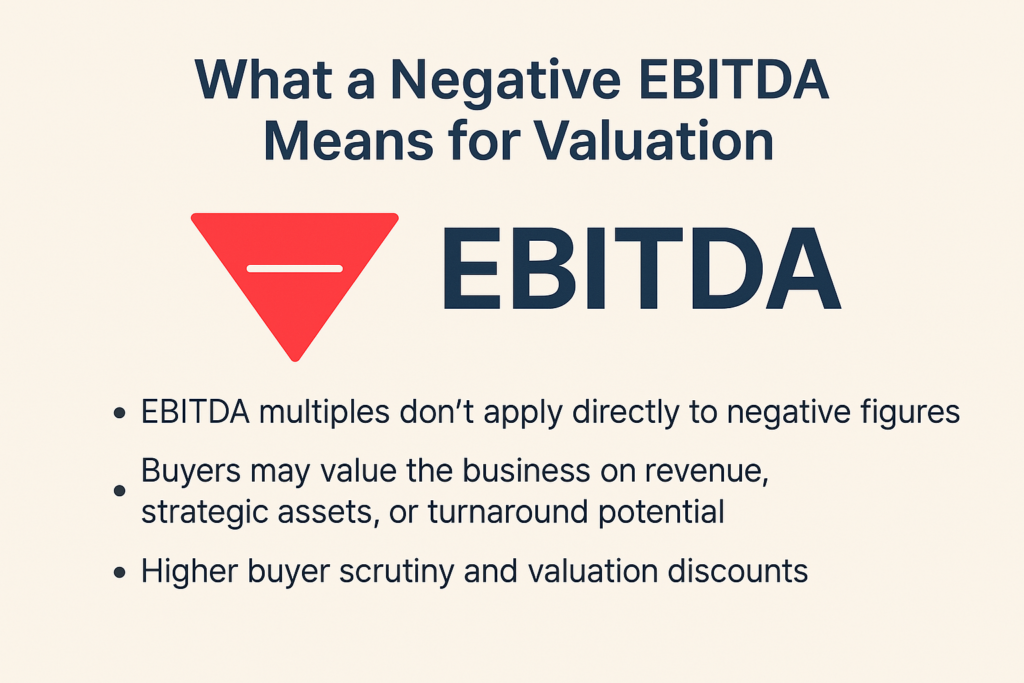Understanding EBITDA: A Key Metric in Business Valuation and Exit Strategy

EBITDA – or Earnings Before Interest, Taxes, Depreciation, and Amortization – is one of the most widely used metrics in business valuation, especially for owners planning an exit. It serves as a proxy for operating cash flow and is often the basis for how much a buyer is willing to pay for a company.
To leverage EBITDA effectively in your exit strategy, it’s crucial to understand where this metric comes from, why it’s so popular in mergers and acquisitions, how it relates to actual cash flow, and what its limitations are. This comprehensive guide explores the origin of EBITDA, its importance in valuation, implications of a negative EBITDA, the impact of accounting changes, industry nuances, and common misconceptions. By demystifying EBITDA, you’ll be better prepared to maximize your business’s value and negotiate a successful sale.
The Origin and Rise of EBITDA in Financial Analysis
EBITDA as a financial metric has its roots in the 1970s, when it was first used by cable industry executives to highlight a company’s earning power while excluding non-cash and financing-related expenses.
In the 1980s, during the rise of leveraged buyouts (LBOs), EBITDA gained traction among private equity firms. These investors used EBITDA to determine if a business could support the debt used to acquire it. It allowed them to focus on operational profitability without distortion from interest payments, taxes, or depreciation.
This helped standardize earnings comparison across companies with different capital structures and became a common metric in private equity and corporate finance.
Why EBITDA Is Widely Used in Business Valuation and M&A
EBITDA is commonly used in mergers and acquisitions for several reasons:
- Standardized Comparison: It removes financing and tax effects, allowing apples-to-apples comparison.
- Proxy for Cash Flow: It approximates operating cash flow and shows earnings from core operations.
- Valuation Simplicity: It is widely used in valuation formulas such as Enterprise Value / EBITDA.
- Operational Focus: It isolates core profitability, helping buyers assess potential under new ownership.
Because of these advantages, businesses are frequently valued using a multiple of EBITDA (e.g., 5x EBITDA).
EBITDA and Cash Flow: Understanding the Difference and Connection
While EBITDA approximates operational cash flow, it is not true cash flow.
What EBITDA excludes:
- Working capital changes (e.g., inventory or receivables growth)
- Capital expenditures (equipment, facilities, etc.)
- Debt service and taxes
Here’s a simplified breakdown:
Net Income: $20M + Interest: $5M + Taxes: $5M + Depreciation/Amort.: $10M ------------------------------ EBITDA: $40M
This $40M figure looks strong—but if your company also had $8M in capex and $5M tied up in receivables, actual free cash flow would be much lower.
Key takeaway: EBITDA is a starting point, not the full picture. Buyers will assess how EBITDA translates into free cash flow before making offers.
What a Negative EBITDA Means for Valuation

A negative EBITDA signals that a company’s core operations are not profitable.
This can occur due to:
- Early-stage investments in growth
- Operational inefficiencies or losses
Implications for sellers:
- EBITDA multiples don’t apply directly to negative figures
- Buyers may value the business on revenue, strategic assets, or turnaround potential
- Higher buyer scrutiny and valuation discounts
Advice: Prepare forward-looking projections and a credible plan for turning EBITDA positive.
How Accounting Changes Can Influence EBITDA
Accounting standards can artificially inflate or deflate EBITDA.
Example: IFRS 16 / ASC 842 (Lease Accounting)
- Old rules: Lease payments recorded as rent (above EBITDA)
- New rules: Leases capitalized as assets with depreciation + interest (below EBITDA)
Result: EBITDA goes up—even though actual cash flow doesn’t change.
What this means for sellers:
- Adjust historical EBITDA for consistency
- Understand how your accounting policies compare with industry peers
- Work with financial advisors to “normalize” EBITDA
Which Industries Rely Most on EBITDA and Why
EBITDA is especially prevalent in:
| Industry | Why EBITDA Is Common |
|---|---|
| Manufacturing | High depreciation from capital equipment |
| Telecom | Large infrastructure assets, amortization |
| Energy & Utilities | Infrastructure-heavy, non-cash depreciation |
| Transportation | Equipment-intensive businesses |
| Private Equity-owned | Emphasis on debt servicing from operations |
Less common in:
- Banks & Financial Institutions – interest is part of operations
- Light-asset service firms – depreciation has minimal impact
Tip: Understand how your industry typically uses EBITDA to benchmark performance accurately.
Common Misconceptions and Misuses of EBITDA
1. “EBITDA = Cash Flow”
False. EBITDA ignores cash tied up in working capital and capex.
2. Depreciation Doesn’t Matter
Depreciated assets still need to be replaced—this costs real money.
3. Over-adjusted “Adjusted EBITDA”
Some sellers overstate EBITDA by removing normal operating costs.
4. Misusing EBITDA Multiples
Comparing EBITDA across companies with different accounting treatments can mislead.
5. Using EBITDA in Inapplicable Industries
In finance, EBITDA isn’t relevant—stick to ROA or net income-based metrics.
Conclusion: Leveraging EBITDA in Your Exit Strategy
EBITDA is a valuable metric—especially during exit planning—but it’s just one piece of the valuation puzzle.
Here’s how to use it effectively:
- Present both reported and adjusted EBITDA
- Clarify how it converts to free cash flow
- Highlight growth potential and cost structure
- Prepare for buyer scrutiny and explain accounting context
A clean, transparent EBITDA story builds credibility and improves negotiation leverage.
Ready to Maximize Your Business Value?
At GBM Capital, we specialize in helping business owners navigate valuation metrics like EBITDA to craft winning exit strategies.
Whether you’re preparing for sale or actively negotiating, our experts ensure your numbers work for—not against—you.
Visit GBM Capital today to schedule a confidential consultation and take the next step toward a successful exit.